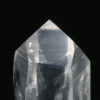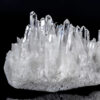Fused quartz, a high-purity form of silicon dioxide (SiO₂), is renowned for its exceptional thermal stability, chemical inertness, and optical clarity. These properties make it indispensable across various industries. Let’s explore how fused quartz is utilized in semiconductors, academia, laboratories, ultraviolet (UV) applications, and the solar industry.
Semiconductors: Precision at the Atomic Level
In semiconductor manufacturing, the demand for ultra-pure materials is paramount. Fused quartz meets this need with its high purity and resistance to extreme temperatures. It’s used to fabricate components like process tubes, wafer carriers, and crucibles essential for processes such as chemical vapor deposition (CVD) and diffusion. These components must withstand temperatures exceeding 1,000°C without contaminating the silicon wafers, ensuring the integrity of microchips.
Academia & Laboratories: Enabling Scientific Discovery
In academic and research laboratories, fused quartz is favored for its durability and resistance to thermal shock. It’s commonly used to manufacture labware such as beakers, crucibles, and cuvettes. Its transparency to UV light makes it ideal for spectroscopic applications, allowing accurate measurements in experiments that involve UV-visible spectroscopy .
Ultraviolet Applications: Harnessing the Power of UV Light
Fused quartz’s ability to transmit UV light, especially in the deep UV range, makes it vital in applications like UV curing, sterilization, and photolithography. It’s used to produce lenses, windows, and optical fibers that require high UV transparency. In the semiconductor industry, for instance, fused quartz is essential in photolithography processes where precise UV light patterns are projected onto silicon wafers.
Solar Industry: Enhancing Photovoltaic Efficiency
The solar industry leverages fused quartz for its high thermal stability and UV transparency. It’s used in the production of photovoltaic cells, particularly in the manufacture of crucibles for melting silicon and in protective glass covers for solar panels. These applications benefit from fused quartz’s ability to withstand high temperatures and its resistance to chemical corrosion, thereby enhancing the efficiency and longevity of solar panels.
Conclusion
Fused quartz’s unique combination of properties makes it a critical material across multiple high-tech industries. Its role in enabling advancements in semiconductors, scientific research, UV applications, and solar energy underscores its importance in driving innovation and efficiency in these fields.







